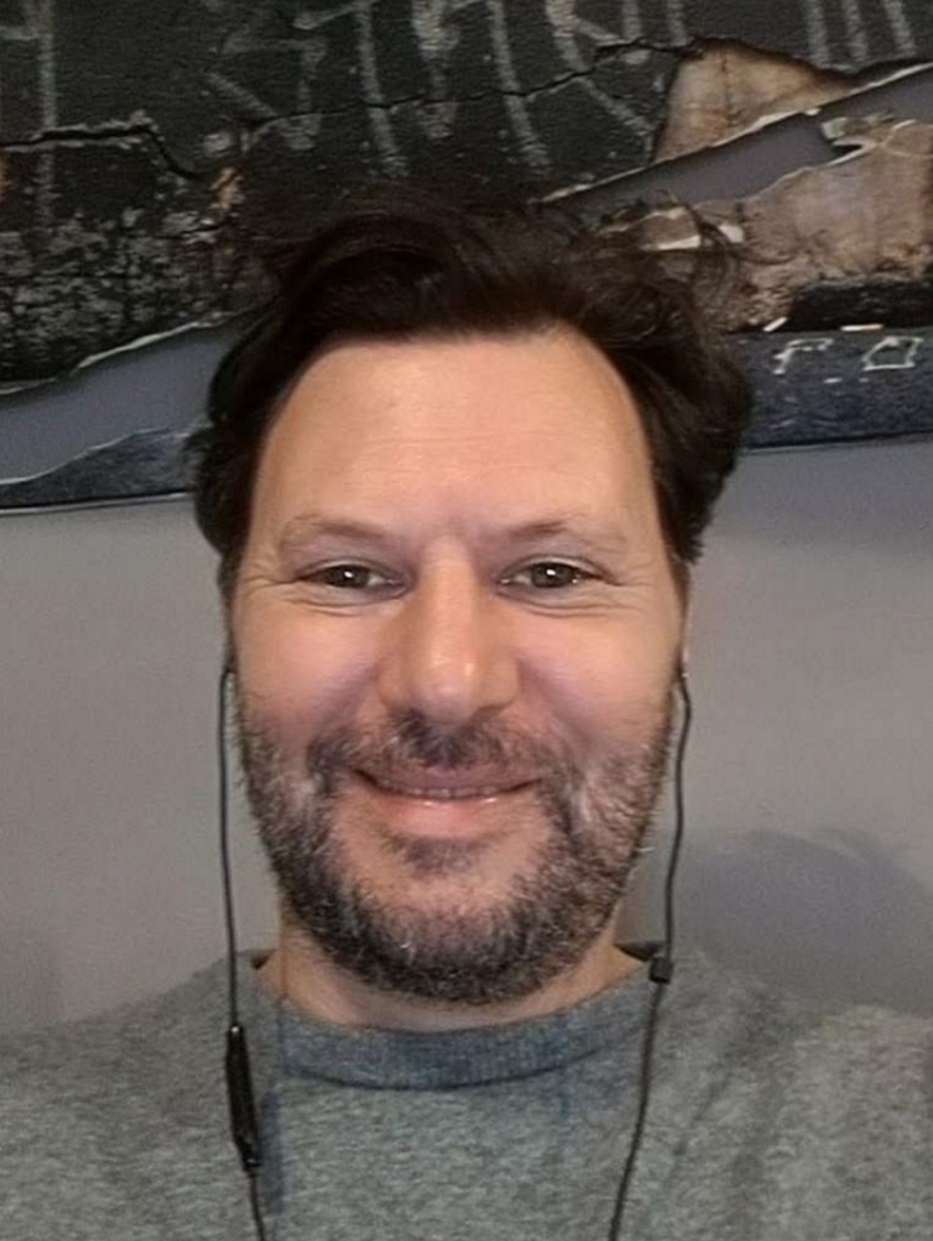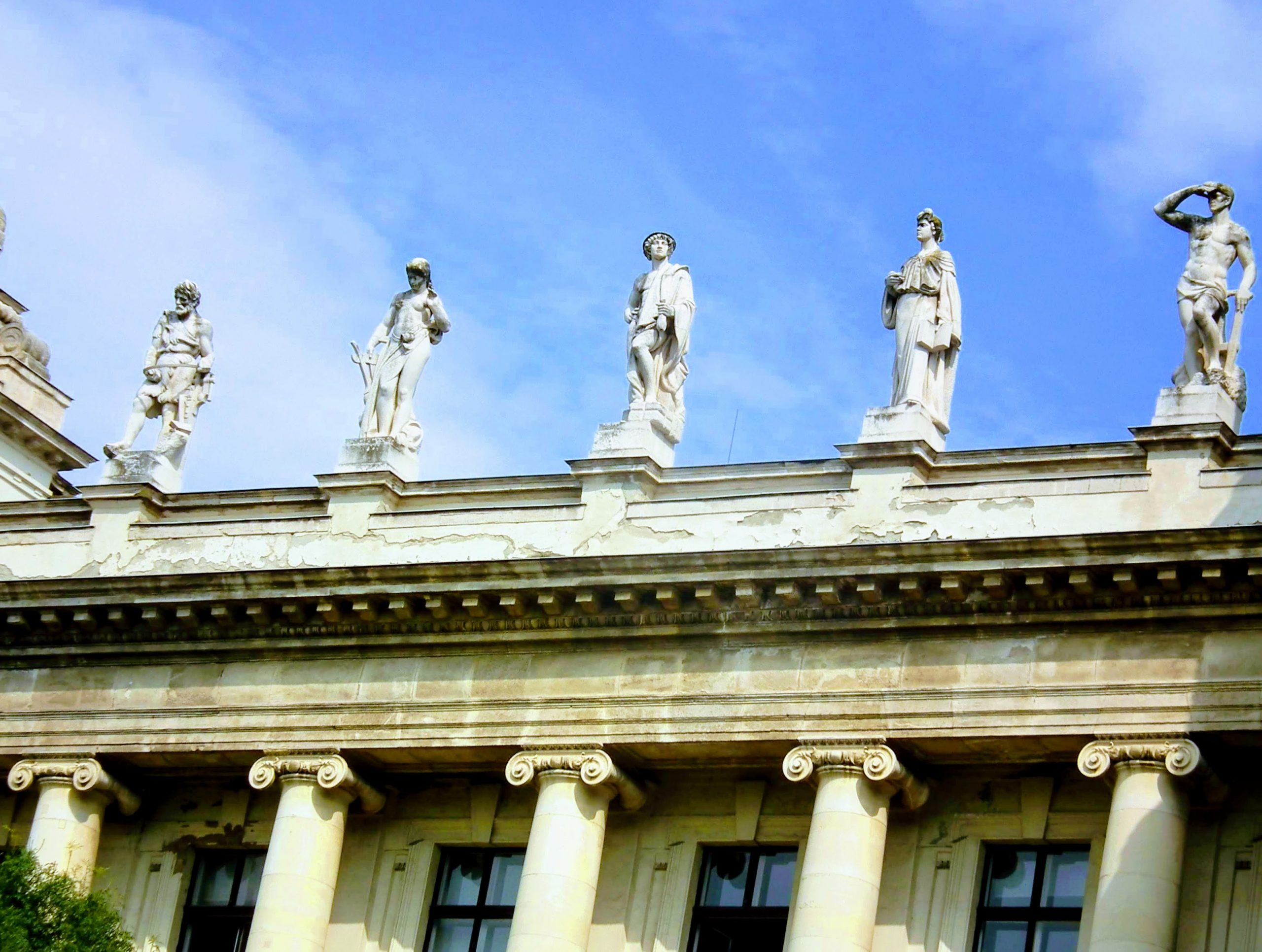
Psychology recognises 12 major archetypes. There have been over 300 listed by various people, but focusing on the 12 major archetypes is sufficient and easier to use as a self-development or therapeutic tool.
To work effectively with the archetypes, it’s important to understand what the 12 major archetypes are, the role they play and the functions they provide. If you don’t already know what the archetypes are, I recommend watching the video below.
You may also be interested in tuning into the Archetypes Explained series on the Master Mind Content YouTube channel.
Archetypes can be defined as personality traits that emerge as specific patterns of thoughts, behaviours and emotions. They are subtle energies that emerge as qualities and faults in everyone.
Some qualities and faults may also be absent in some individuals meaning that a particular trait has been brought to the surface of the conscious awareness. This may be because the skill or knowledge has never been needed or it was repressed at an early age and subsequently forgotten.
The eminent psychoanalyst Carl Jung noted that archetypes belong to the collective unconscious but project onto the conscious mind and take possession of the ego.
Jung further described archetypes as autonomous personalities or complexes that behave “like secondary or partial personalities in possession of a mental life”. [Carl Jung, CW11 Psychology and Religion, p.14 (1958)]
Thought-Provoking Quote
“Every archetype, at its first appearance and so long as it remains unconscious, takes possession of the whole man and impels him to play a corresponding role.”
~ Carl Jung, Psychology and Alchemy
The 12 major archetypes show up in your attitudes, moods, instincts, impulses, complexes and neuroses. Recognise your regular patterns and you can identify the 12 major archetypes that cause problems in your life and develop traits that enable you to thrive.
Understanding the contents of your unconscious provides insights about problems that keep reoccurring in your life and why.
When unconscious content is brought to the light of the conscious mind, you expand conscious awareness and enrich your quality of life. You appreciate the smaller things, feel connected with everyone and everything, sense unbridled love and cultivate inner peace.
If you’re not already familiar with the 12 major archetypes, you will probably have noted that internet psychologists have crudely clumped archetypes into personality types.
This wayward approach typically encourages individuals to focus on the qualities you have rather than the qualities you need to develop. It encourages people to identify with a particular archetype; “I am the Sage or I am the Caregiver”.
That is not the right way to work with archetypes and has limited powers as an effective clinical therapy or a self-development tool.
Having said that, some of the 12 major archetypes will be more pronounced in you than others. I suspect this is why mainstream psychology boxes people into a specific archetype. But the problem here is that you become too one-sided and concentrate on the qualities of one archetype and ignore the others.
And when the other archetypes are ignored, they rebel.
Thought-Provoking Quote
“When, therefore, the individual stands consistently upon one side, the unconscious ranges itself squarely upon the other, and rebels.”
~ Carl Jung, Psychological Types
It is the archetypal qualities that are absent or underdeveloped that are in. the most need of attention. By developing the personality to be as whole as possible gives you the dynamism and competence to navigate the world and overcome challenges successfully and with greater ease.
Not only is it important to find a balance between archetypal energies and draw repressed qualities from the unconscious into the conscious mind, but you also need to release trapped emotions that cause the damming up of energy. Failing to express archetypal energies causes a complex, then a neurosis then illness and dis-ease.

Below are the outlines for both the positive and negative (shadow) characteristics for each of the 12 major archetypes. In the main, the Master Mind Content archetypes model retains the modern classification provided by psychology. However, several adjustments have been made which is necessary to better describe the role and function of the archetype.
It’s also worth noting the 12 major archetypes presented by mainstream psychology are often described as sharing the same attributes. That’s why there are so many. But whilst some archetypes may display the same behaviour or attributes i.e. anger, the cause behind an emotion is different. How a particular emotion shows up is key to identifying which archetype is influencing a particular behaviour and why.
This information is important to know when working with the 12 major archetypes as a self-development tool. During self-analysis, knowing the nature of the archetypes makes it easier to determine which archetypal energy you need to develop and whether the ego needs deflating.
There are over 300 archetypes specified by psychoanalysts, but because there are a lot of subtle overlaps it’s easier to describe archetypal patterns in a palatable 12 major personalities.
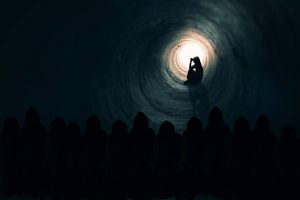
In other words, it’s “unconscious” but the shadow personality is often partially conscious. These are the autonomous complexes Jung recognised taking possession of the ego to serve as a coping mechanism. It is by observing the shadow traits that you can integrate archetypal qualities into the conscious personality and improve your capacity to successfully navigate challenges.
Likewise, understanding the positive attributes of all 12 major archetypes will enable you to determine which archetypes are developed, which are dominant, which have possessed your ego and which you need to mature.
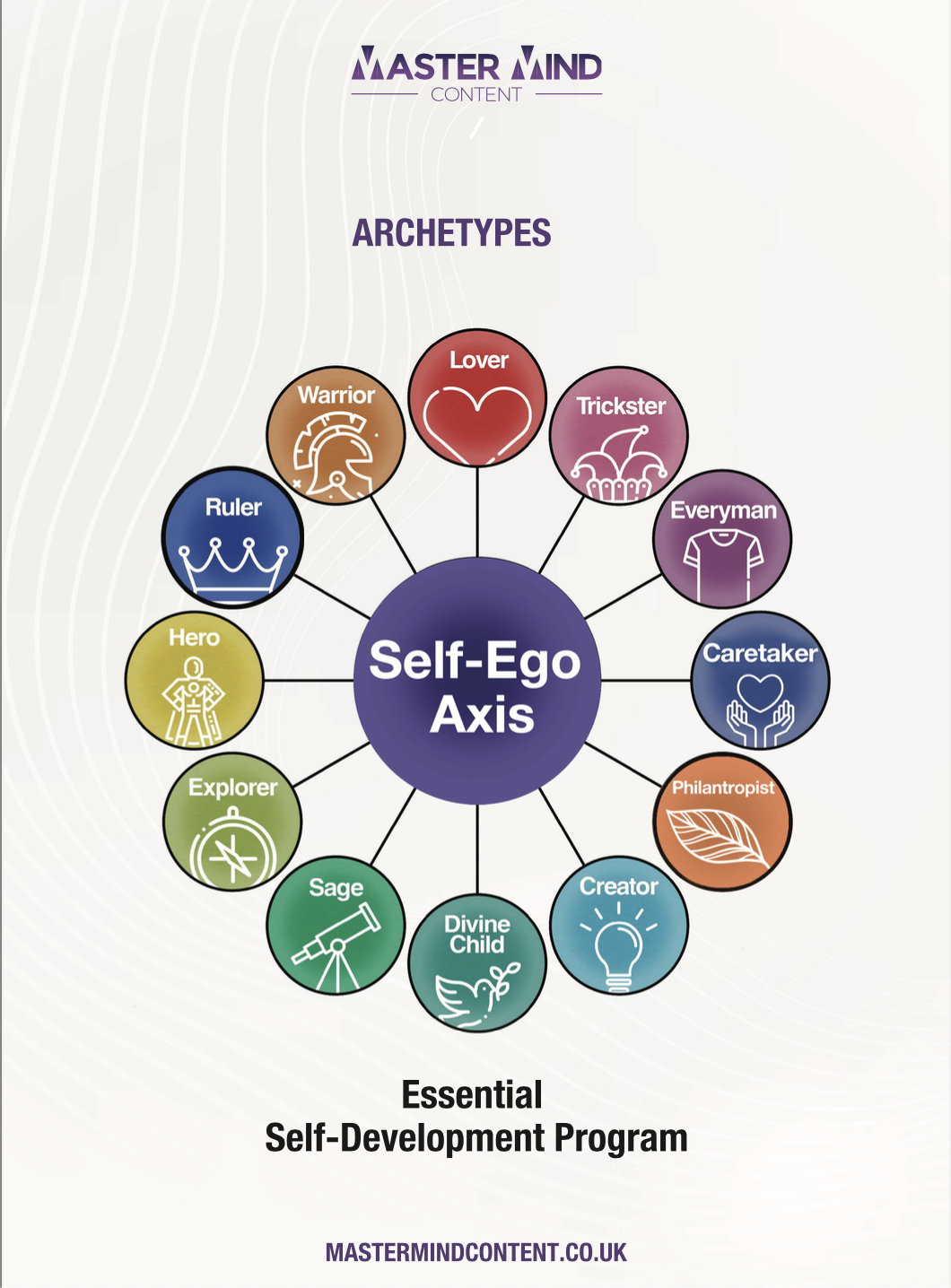
I intend to deal with the 12 relevant archetypes in the Guide To Greek Symbolism – Coming Soon. Until then, subscribers to any of the Master Mind Content symbolism courses (excluding Beginner’s Guide) and self-development courses can access more information about the 12 major archetypes from the VIP Members Area.
Also known as King, Sovereign, Tyrant, Bully, Father
The “Ruler” tends to be characterised as someone driven by a need for power. This is not entirely true even though the king’s sovereign energy does provide you with ambition and a drive for success.
However, a well-balanced Ruler does not feel the need to hold a position of power or hold power over someone else. They are endowed with personal power which they recognise is all they need to successfully function in the world.
Whilst a power drive is a quality everyone needs as part of their character armour, it is the archetypes of the wounded Philanthropist and the wounded Warrior, rather than the Ruler, that craves power and success.
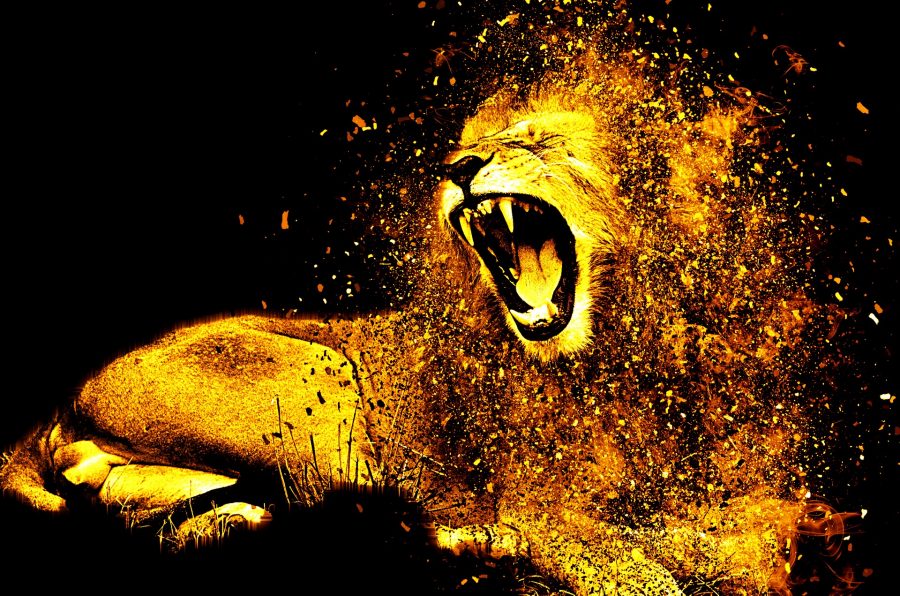
For instance, in their book, King, Warrior, Magician, Lover: Rediscovering the Archetypes of the Mature Masculine, authors Robert Moore and Douglas Gillette write:
“In many ways, the king energy is Father energy. It is our experience, however, that although the King underlies the Father archetype, it is more extensive and more basic than the Father.”
The respected psychoanalyst John W. Perry also described the Ruler as the “central archetype” around which the rest of the psyche is organised.
It should be noted that the King archetype is not the Ruler archetype but an aspect of the Ruler, just as the Father is an aspect of the Ruler. A King, as we see in mythology, influences the hero’s journey by barking out orders and sending him on a quest.
A father is responsible for teaching a child ways to navigate the world, establishing values and principles and helping to build competencies and confidence.
In essence, both the King and the father are authoritative figures who influence the development and evolution of another person. But do you see how they do this in different ways?
As an internal archetype, your inner Ruler is responsible for your personal development and evolution. But this can only be achieved by the decision you make. Do you stay in survival mode and do what you’ve always done or do you develop competencies and move into thriving mode?
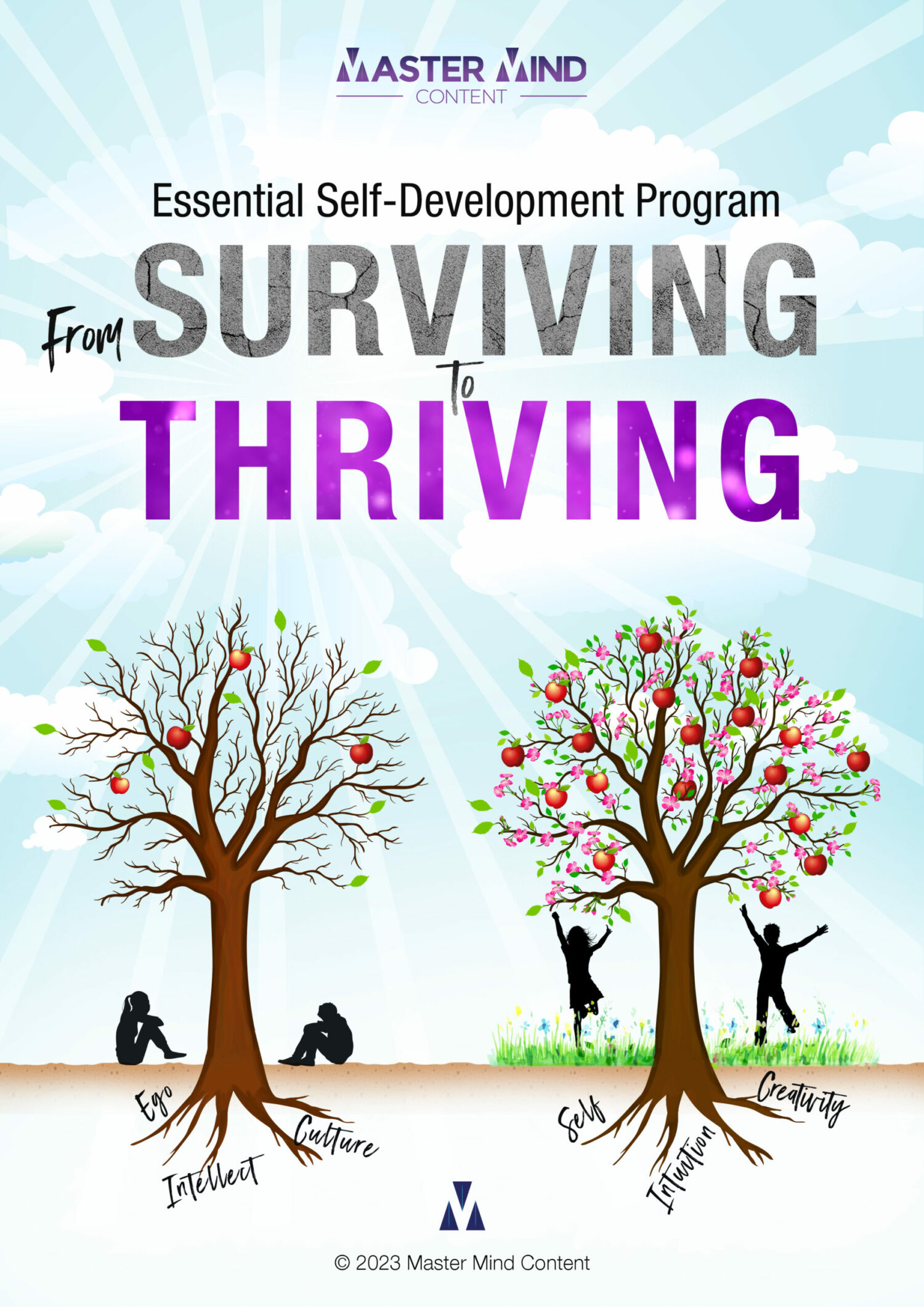
Furthermore, it is evident in world mythologies that the mortal father or king is replaced by the son or prince. This is symbolic for emerging consciousness welling up from the unconscious replacing fixed beliefs, attitudes and ways of being that already exist in the conscious mind.
The crowns worn by royalty throughout the ages are symbolic of the sun’s rays. The sun is also a symbol of the Self. Lions, the king of the jungle also share a similar meaning because their manes resemble the glare of the sun. The Self, or True Self, helps to bring unexpressed archetypal energies into the light of conscious awareness.
As Moore and Gillette point out, the energy of the King archetype (which we recognise as the Ruler) means you are calm, centred and life-giving. When fully developed, it is the most important of the personality traits.
Thought-Provoking Trait
“The King archetype in its fullness possesses the qualities of order, of reasonable and rational patterning, of integration and integrity in the masculine psyche. It stabilizes chaotic emotion and out-of-control behaviors. It gives stability and centredness. It brings calm. And in its “fertilising” and centredness, it mediates vitality, life-force, and joy. It brings maintenance and balance. If defends our own sense of inner order, our own integrity of being and of purpose, our own central calmness about who we are, and our essential and unassailability and certainty.”
~ Robert Moore and Douglas Gillette, King Warrior Magician Lover
Many of the attributes mentioned in the above description share traits of the “True Self” described by religions. Jung aligned these traits with the “Self” archetype which he also described as the central organising aspect of the totality of consciousness.
It is the Self that prompts you to thrive and become whole by recognising the split-off qualities of the archetype that reveal itself in a complex, neurosis or disease.
The ego, on the other hand, is the central organising influence of the conscious mind and makes decision in relation to the external environment. You often do this on autopilot without consulting what you really think and feel you should do.
Unless you engage in introspection before making decisions, the ego is calling all the shots. And because the ego responds to subconscious programs, the decisions you make and the beliefs you hold are what have been handed down to you by your parents, teachers, peers and society as a whole.
Your subconscious programs could be bullshit. To access your Truth, consult the Self. You are best served when you are Self-directed. This is a sign of a well-developed Ruler archetype.
Thought-Provoking Quote
“..the Self, the imaginary center of wholeness, directs not only the species-specific but also the individual development of the human being…That is to say, in the human individual the Self exerts its effects as the tendency not only to play the typical role in one’s adaptation to life but also to discover one’s own authentic beingness and to achieve Self-realization through life and the collective; i.e., to actualize one-Self in one’s own unique suchness. But for Self-realization all the phases of transformation are necessary.”
~ Erich Neumann, Essays, Fear of the Feminine
An understanding of the Self-ego axis is essential when working with archetypes because unconscious energies take possession of the ego and prompt you to do things you have no real reason why. This is a sign of a weak Ruler.
At times, archetypes may even project onto the ego and make you act of character. How often do you say, “I don’t know what came over me.” It could be the case that all 12 major archetypes take possession of the ego. This will undoubtedly create a lot of conflict and chaos in your life.
You can learn more about the Self-ego axis here.
The central powers of consciousness have autonomy and make your decisions. How you experience life is influenced by the Self or the ego. When archetypes are split off, the ego is fragmented. It is not whole.
It’s worth noting at this point that the root word for ‘whole’ shares the same root word for healthy; hal. Therefore, to be whole means to be healthy. When the mind is fragmented, your mental health is affected.
In mythology, the malevolent, or weak Ruler often has a very real fear of being overthrown. You could say this is analogous to the undeveloped ego that is afraid of change and transformation because its primary function is survival — keeping you safe in your bubble of comfort.
When you stay in your bubble of comfort, you do not develop or evolve. The ego stays the same on the throne of your conscious awareness. Consequently, the archetypal energies rebel and you’re more likely to develop neuroses and disease.
Thought-Provoking Quote
“The weak ego is the neurotic ego; neurosis is an ego fault; cure is control from headquarters.”
~ James Hillman, Re-Visioning Psychology
You will notice during the process of self-development that you will feel uneasy at times. The ego’s fear of being overthrown will sometimes manifest as an intense feeling of stress in your head.
Thus the “king’s fear of being overthrown” is felt by resistance from the ego. In mythology, the struggle between the Self and the ego is brought to life in the battles between gods and demons, heroes and monsters, or nations trying to defend against a tyrannical king.
In mythology, the death of a king or the hero’s defeat of a monster (his inner demon), reflects a shift in conscious awareness. Before they achieve their conquest, the hero has to go through a period of chaos and conflict before he finds peace and harmony. The same is often true of self-development.
If you don’t experience a transformation energetically, (which is the best way), you will experience it physically in the real world in some form of traumatic experience. The question you should ask yourself is whether you want to learn life the easy way or the hard way!
Thought-Provoking Quote
“Falling into an inflation (of ego) means a betrayal of one’s instincts (true nature). The instinct protects we have an instinctual protection against inflation. We have all often become inflated and know that when one is inflated one feels uneasy. Even before we fall down the stairs we have the feeling that today we will fall down, because somehow we have a kind of bad conscience or malaise, we don’t know why, and then bump! the punishment for inflation generally comes quickly; one walks into a car, or something like that….What is worse, inflation always means sterilization of the mind, for if one is inflated one is both sterile and stupid.”
~ Marie Louise von Franz, On Divination and Synchronicity
People with a well-developed Ruler archetype typically have a goal which they are adept at putting into action. Depending on whether the King energy in you is benevolent or tyrannical, you will either persuade and inspire others to willingly support your vision or subdue them through manipulation and perhaps even force.
When positive, having the Ruler archetype in your character armour enables you to become a good leader. You carry an air of authority, people respect your opinions and take your instructions on board.
With a “good King” at the helm, you will have a successful career, raise your children to have strong moral values, earn the respect of others and share a peaceful marriage with your partner.
You exude confidence and authority. When making decisions, you have the mental capacity to use logic and reasoning rather than knee-jerk reactions prompted by emotional impulses.
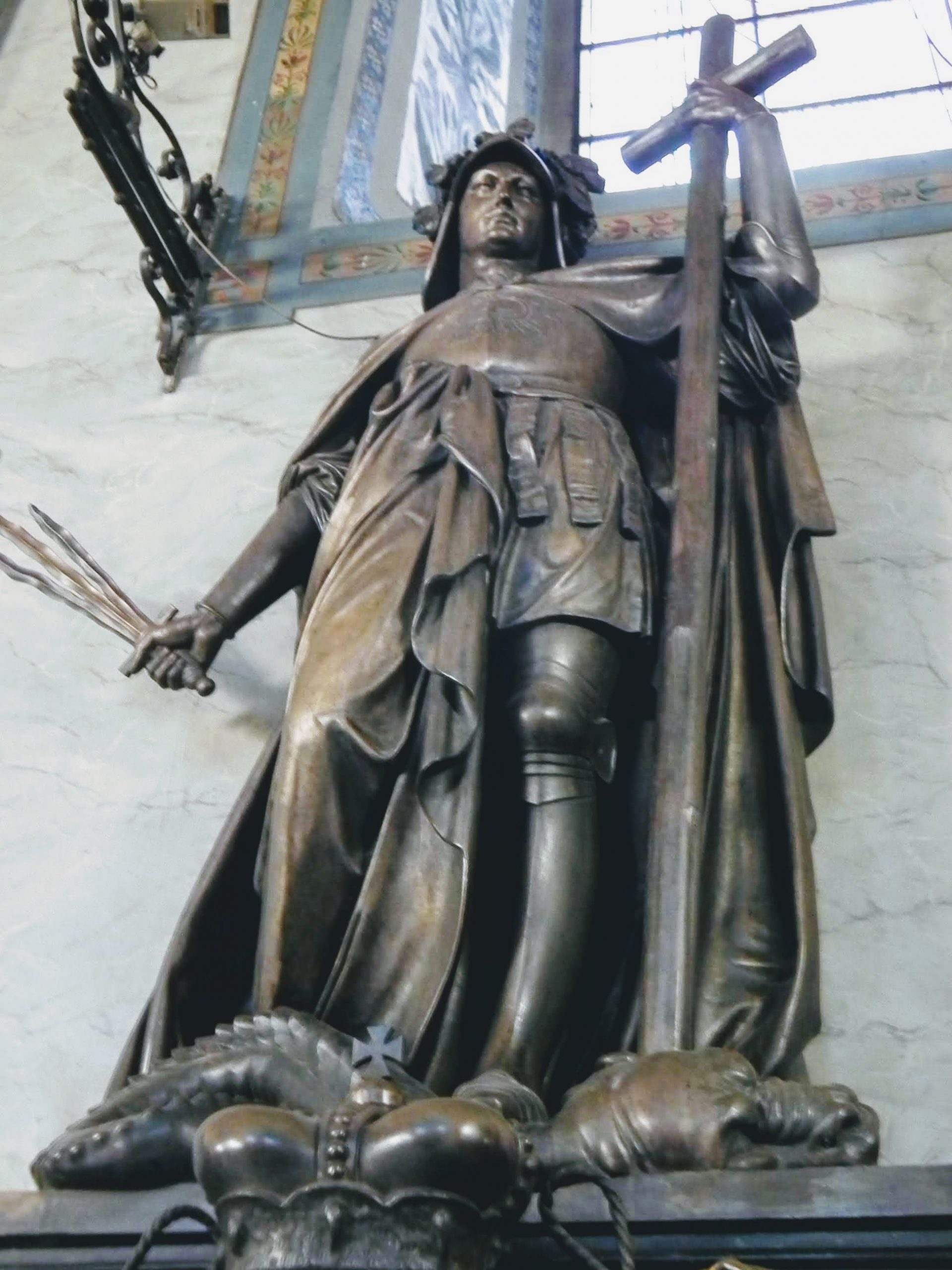
In symbolism, the “subjects” of a city, realm, kingdom or country are the cells in the body. If your children are afraid of you, their cells are also being damaged. They will also develop neurotic behaviours in adulthood.
For more information about how a father can disturb the emotional development of a child, read my article on the Father Complex.
When you provide your cells with good information your bodily functions work how they are designed to. This enables you to stay in good health. You also expand conscious awareness and make good decisions.
The King archetype (The Self) is responsible for maintaining order and creating a wealth of knowledge so that you prosper physically and spiritually. The organising function must be able to put information in formation. Without order, you experience chaos, physically, mentally and emotionally.
The shadow side of all the 12 major archetypes is the unconscious aspect of your psyche. To heal, you have to get to know your shadow archetypes and factor their positive aspects into your character armour.
When the Ruler archetype is fully integrated into the psyche, you are charismatic and amiable. However, the negative Ruler will place unreasonable demands on other people and get angry at them if they do not fulfil your wishes.
Even if your desire at any given moment is inconsequential, the tyrannical king can make you fly off the handle if you are in a bad mood.
Because the tyrannical ruler wants complete control, people who are possessed by this archetype find it difficult to delegate. In such cases, the shadow energies will appear in the form of feeling overwhelmed. This is an indication for you to stop putting too many demands on yourself and learn to trust others.
The expression, “Don’t bite off more than you can chew” is appropriate advice for individuals looking to develop the Ruler archetype.
A shadow projection may also make you a strict authoritarian, both at work and at home. This is a weakness in character that can be overcome by releasing repressed anger and adopting the qualities of the lover archetype.
When the Ruler archetype is underdeveloped, people will not admit they cannot do something in case it undermines their authority. This also reflects deep-rooted feelings that you are not good enough.
However, dishonesty will rear up in the shadow and you will eventually feel overwhelmed and stressed. If you recognise these traits in yourself, you need to activate and develop the positive side of the warrior archetype.
The Warrior archetype is the final step to developing a strong and trustworthy ruler that will enable you to achieve your goals and be happy with everything you have.
Also known as The Caregiver, Mother, Queen, Maiden, Samaritan, Idealist, Healer
Together with the Ruler, the Caretaker is one of the most important archetypes to develop because it is ever-present. The Caretaker is responsible for taking care of the mundane day-to-day duties and responsibilities.
Mainstream psychology calls this archetype the Caregiver, but I feel as though this is the wrong description. This is evident by analysing the definitions of the words caretaker and caregiver.
The word “caregiver” is a relatively modern term that replaced the word “caretaker”. The Oxford English Dictionary describes a caretaker as “one who takes care of a thing, place, or person; one put in charge of anything.”
The caregiver is described as “a person who takes care of a sick or old person at home.”
This latter definition indicates a caregiver takes care of other people. It doesn’t imply that you take care of yourself. The definition of the Caretaker implies that you need to take care of yourself as well as others.
That is the function of the Caretaker!
While the Ruler is more concerned with making the right decisions, the Caretaker considers other people. This archetype is also known as the Great Mother which imbues unconditional love, compassion, dedication and patience.
Other attributes associated with the Caretaker are generosity, protection and nurturing. Developing the mother archetype enables you to willingly help others and put people’s needs before your own.
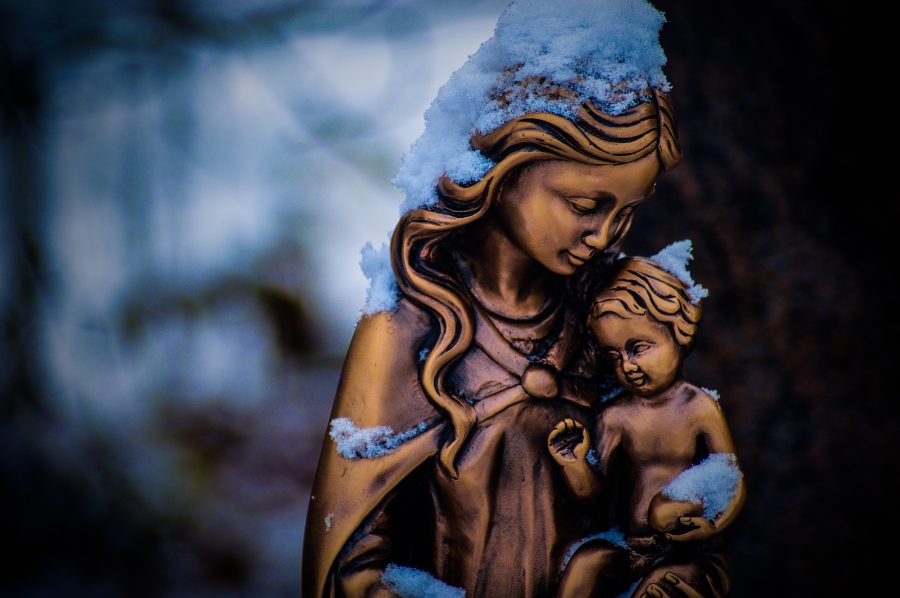
The caretaker is a positive mother that is able to say no to your child because you know what is best for them. On the flip side, you have the flexibility and presence of mind to understand your offspring need the freedom to explore the world and develop their personality.
The Mother archetype is connected with the root chakra which defines your sense of Self and provides your basic needs. When the caretaker is balanced you are grounded, emotionally stable and in good health.
The shadow side of the caretaker is said to fall into the categories of the “victim” “martyr” or “slave” archetypes.
People with a giving and compassionate nature often have a difficult time saying no. Subsequently, you overstretch yourself and spend all your energy on other people rather than on yourself.
This type of behaviour is classified as the “Victim”. By giving yourself to others you lose your sense of self and find it difficult to set boundaries.
The victim archetype is someone who does not nurture themselves and meet their basic survival needs — either physically or emotionally.
If the caretaker in you is unable to set boundaries, the shadow will appear as feelings of bitterness and resentment. You may even guilt-trip people so they recognise your sacrifices. Ultimately, you want to be recognised for your good deeds to feed your emotional body.
Negative aspects of the caretaker arise due to a mother complex. Feelings of inadequacy often arise because you did not receive enough emotional support from your mother.
As an adult, you can often feel overwhelmed with situations you think are beyond your realm of capability. This makes you feel incompetent and unworthy — again feelings that were instilled in childhood because your achievements or your presence was not recognised.
Caretakers can also develop a slave mentality which leaves you feeling exhausted. When you’re not in a position to do something for somebody else – when you have to say no – you feel guilty and ashamed.
Feelings of guilt and shame ultimately impact your ability to relax and enjoy life. Trapped in your hips, these blocked energies prevent the loving and creative aspect of the feminine principle from flowing through you.
Other Everyman Archetypes: Member, Orphan, Persona, Realist, Victim
The main focus of the Everyman archetype is to fit in, find a sense of belonging and enjoy life. It is the aspect of your nature that longs to be accepted by others in your community.
The Everyman archetype excels at creating and forging connections with others. This energy gives you a delightful charm and an amiable demeanour which makes you instantly likeable.
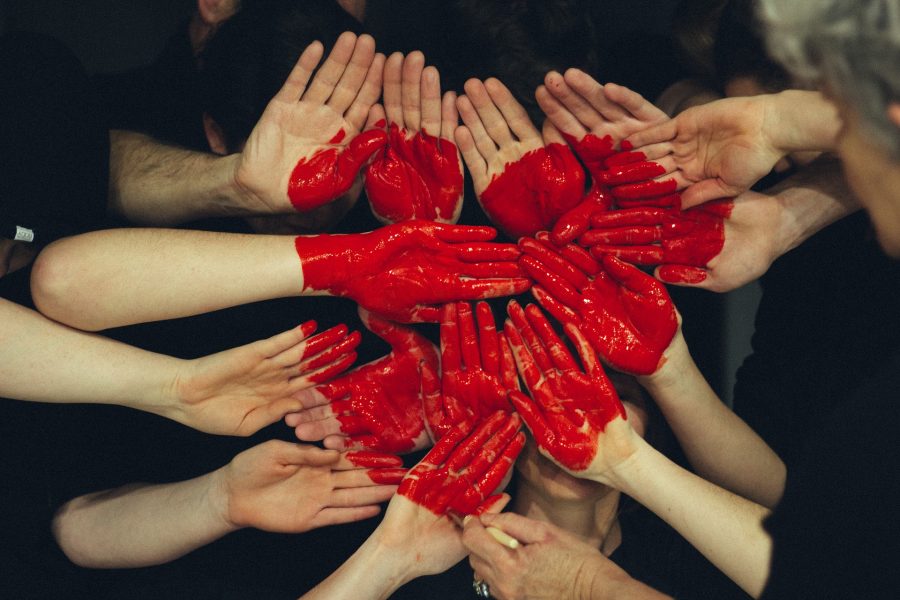
It is this aspect of your personality that gives you the capacity to form relationships. It also hides the real you in the background. This can be a good thing if your animal nature is not refined.
Jung warned that if you associate with your persona, you lose your own identity and hide behind the mask.
Thought-Provoking Quote
“Whoever looks into the mirror of the water (the Unconscious) will see first of all his own face. Whoever goes to himself risks a confrontation with himself. The mirror does not flatter, it faithfully shows whatever looks into it; namely, the face we never show to the world because we cover it with the persona, the mask of the actor. But the mirror lies behind the mask and shows the true face.”
~ Carl Jung, The Archetypes and the Collective Unconscious
When this archetype is balanced you perform well in groups and share a common vision. You don’t feel the need to stand out, just serve your function as part of a team.
Although you work hard, you are content with a simple life. Your family is important and you make time to give them the attention they deserve. Incorporating the Everyman archetype helps to offset the workaholic of the Ruler archetype.
Also known as the orphan archetype, the Everyman yearns for personal safety by spending time with other people. Although this archetype is a natural development from the Innocent (Child) there is still a vulnerability about the individual that craves company.
This generally occurs when someone betrayed your trust as a child. Maybe you felt rejected by your parents as we see in the character of Hephaestus in Greek mythology.
However, the imbalance may have been caused by something that is quite natural in the life of a young child. For example, when you realise the utopian fantasy you have as a child is not how the world really works, there is a high possibility you were left feeling powerless, hence the need to be supported by team members as an adult.
The gravest fear in the Everyman archetype is to feel left out. Being ignored is devastating. As a result, when the Orphan archetype is dominant, you may emotionally manipulate people to give them a guilt trip.
A weakness of the Everyman archetype is that they are dependent on other people. This can give you a character weakness that exudes a feeling of helplessness. You may even refrain from learning how to do things so that other people do them for you.
An underdeveloped Everyman archetype will also prompt you to conform to societal norms and the demands of people you want to like you. This will often lead to you saying yes to things you don’t really want to do.
Adolescent boys can often fall into this trap when they are dared to do something dangerous or foolish by their peers. To fit in, the everyman will do whatever it takes to impress his friends.
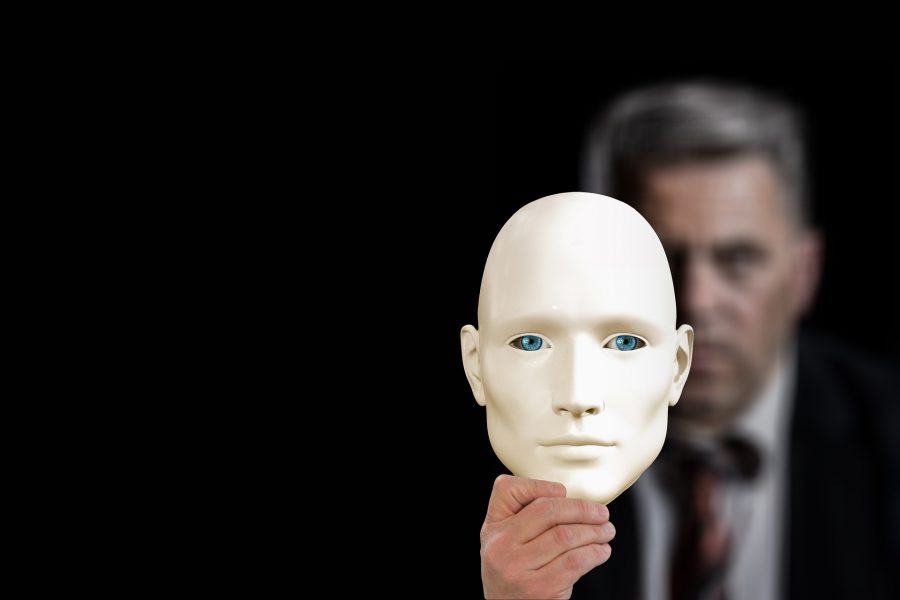
The Shadow Everyman can also manifest as anxiety. When you are not being True to your Self, the unconscious aspect of your personality will make you feel uncomfortable.
Denying yourself the things you want to do in life, takes away the things that you need to grow emotionally and spiritually. As you get older this will manifest as restlessness and an overwhelming desire to differentiate yourself from your friends.
Also known as Artist, Architect Innovator, Inventor, Visionary, Hermit
The Creator is archetype is a transformative energy when used in the right way. This archetype brings the power of imagination and foresight which enables you to envision the future and prepare yourself for future realities.
We see this archetype in the Greek gods Athena and Hephaestus. Hephaestus is the craftsman of the gods who makes weapons and magical instruments that give the gods power.
Athena is also the goddess of crafts and has a special skill of weaving which requires foresight, She is also the goddess of ships which represent the Superconscuus needed to navigate the sea of life.
Thought-Provoking Quote
“In the beginning God created the heavens and the earth. Now the earth was formless and empty, darkness was over the surface of the deep, and the Spirit of God was hovering over the waters.”
~ Genesis 1.1-2
Artistic, or imaginative qualities, generated by the Creator archetype, provide you with inspiration and a vision. It is this “visionary” element of your personality that is ultimately adopted by the Ruler archetype.
The difference between the Creator and the Ruler is that the latter seeks to maintain control of the vision and reap the rewards whereas the Creator is happy to share their vision with others and delight in what they have created.
The ego is the outward-facing centre that connects with the outside world and ignores the inner voice of repressed archetypes. If you find yourself holding on to fixed beliefs and concrete attitudes, you do not allow yourself to unleash your creative nature and flourish in new environments,
A positive aspect of the Creator archetype is the willingness to constantly learn. Eager to improve, you can adapt to new circumstances without feeling flustered.
With the rapid pace of advancements in technology, new challenges come thick and fast. Being able to call upon the qualities of the Creator (or Magician) enables you to work out a solution.
Negative traits of the Creator archetype can often cause you to lose sight of what you have achieved.
When you focus on perfection, you struggle to accept things for how they are. The expression “an artist’s work is never finished” suits the shadow side of the creator archetype.
The inability to be content with what you have and move on is obviously a detriment to self-development. Unless you explore other aspects of life, you cannot develop your personality and ultimately become stale.
Moreover, whilst ever you pursue the ultimate creation, you lack stability and comfort. Artist personalities tend to live in their heads and are often not in control of their emotions. Emotional discharges can create beautiful art, but typically create chaos in your life.
As a consequence, this can destabilise your connection with your relationships. By excluding other people, you develop the same negative traits as the ruler is unable to delegate.
Also known as The Child, Innocent, Shaman, Healer, Idealist
The Divine Child is a modern product of Jung’s child archetype. This archetype is the closest you will get to the True Self or Inner Child of Eastern mysticism; an uncomplicated and authentic personality.
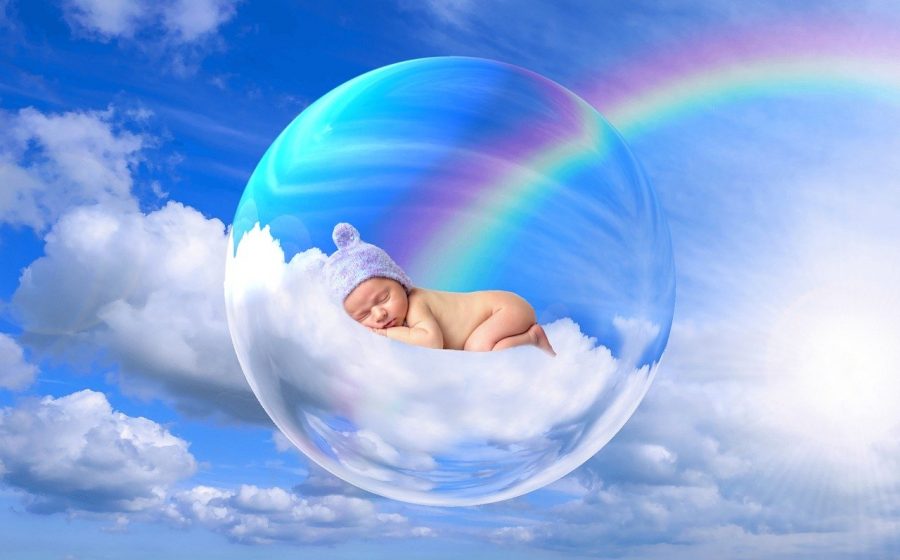
When we are born, our awareness is solely in the unconscious. It is not until between the ages of 1-2 years old that we start to develop ego – our connection to the outer world.
Thought-Provoking Quote
“By the end of the first year of life, if not before, the egogerm of the child begins to prepare for its subsequent autonomy. Initially this development, too, is sheltered by the mother, who supports and furthers the child’s growing independence just as she does its learning to walk and to talk. While the first postnatal, embryonic year still stands under the sign of the unconscious unity of mother and child in the primal relationship in which the mother is simultaneously world and Self, the “migration” (as we have called it elsewhere) of the Self from mother to child gradually begins. With this second birth at the end of the first year of life and “postnatal embryonic period,” the ego-development and increasing independence of the child’s personality become evident.”
~ Erich Neumann, Fear And The Development of Personality
The Divine Child archetype is the aspect of your consciousness that can guide you back to the unconscious in search of innate wisdom. Jung believed this wisdom comes from the collective unconscious – a second source of consciousness which is separate from the personal unconscious (subconscious).
As an archetype, the Divine Child is the most unique. It has been coined the “Alpha to the Omega” a phrase associated with Jesus on his journey from being a mortal man to becoming spiritually enlightened.
What this essentially means is that as a newborn child, we are totally oblivious to the outer world. We live in a pure state of bliss without any awareness of the dangers and stresses related to life. It is also said that you fall back into this state of pure consciousness when you die.
The ability to connect with the innocent can instil this sense of utopia and trust in the Self within you. Integrating the Divine Child brings a state of inner peace.
In some respects, primordial energies contain the purity – and thus innocence – of a child. It is the aspect of your nature that searches for happiness and is easily pleased.
The Divine Child even desires peace for your enemies and embodies sympathy and sincerity. It is an archetype you need to call upon when forgiving people who have hurt you in the past.
Thanks to this purity, people who have a dominant aspect of the innocent archetype in their personality have a gift for inspiring people to do the right thing. They can also offer hope because optimism is the primary motivation.
For all the positive traits the innocent archetype offers, the shadow side causes serious problems in individuals and the world.
People who blindly defend someone “evil” because they have an emotional detachment to them are typically possessed by the innocent archetype; a woman who goes back to the husband who beats her for example.
We also find the Divine Child in people who defend political leaders even when it is blatantly obvious to “awakened” people that politicians have no interest in serving the general population.
It is often the case that people living a sheltered life are strongly influenced by the Divine Child archetype. They have subsequently grown into adult children and harbour childish personality traits.

You might also be precocious and difficult to reason with. Moreover, you shy away from challenges and ignore anything that goes wrong. In doing so you invite more problems into your life moving forward.
Yet every problem or situation you encounter in life is an opportunity to learn something about yourself. The shadow side of the innocent archetype acts as a catalyst for growth.
Thought-Provoking Quote
“This agrees exactly with our experience of the psychology of the individual, which shows the “child” paves the way for a future change of personality. In the individuation process, it anticipates the figure that comes from the synthesis of conscious and unconscious elements in the personality. It is therefore a symbol which unites the opposites; a mediator, bringer of healing, that is, one who makes whole.”
~ Carl Jung, The Archetypes and the Collective Unconscious
Naivety is also a trait of the shadow innocent archetype. In adults, this can lead you to trust people who want to rip you off – or worse, cause you harm. The Divine Child in an adolescent is likely to suffer abuse at school.
To overcome the shadow nature of the Divine Child archetype, individuals have to call upon the so-called Warrior or Explorer archetypes. Both these archetypes fit into Jung’s classification of the second stage of ego development; courage and a desire to learn about the world.
Let’s take a closer look.
Also known as The Seeker, Revolutionary, Entrepreneur, Hunter, Archer, Rebel, Sleuth, Detective, Philosopher
As the name implies, the archetype of the Explorer is your desire to learn, travel the world and discover yourself. When this aspect of your consciousness is awakened, you are often prompted to go on a voyage of self-discovery in one form or another.
The Explorer is the second stage of character development when the adolescent child breaks away from the mother. It’s not simply that you crave adventure. You are in search of your independence, your identity. You need the explorer to break away from the unconscious grip of the Father and Mother complexes. Teenagers who rebel against their parents are developing their explorer archetype.
In my opinion, the explorer corresponds with Jung’s Hero archetype which is looking for independence or freedom. In myth and literature, the “hero’s journey” is typified by an adventure in which the hero encounters challenges that must be overcome – and thus we draw on the energies of the warrior – another hero archetype.

I was in my mid-twenties before the hero emerged. Although I had always been inquisitive, which suggests the Explorer was present, I did not have the personal power to motivate the Explorer into action. The reason for that is because I was shy, lacked self-confidence and had not developed the warrior aspect of the hero. The Everyman archetype matured in me first because I needed to feel accepted and loved.
In Shamanic traditions, there is a tale of the Hummingbird that had sampled all the nectar Mother Earth had to offer. The only thing the Hummingbird did not have any experience of was God. So to fulfil her desire she hid in the feathers of the eagle, for the eagle was the messenger of God and the only creature on earth that came into contact with Him.
The Hummingbird is the stereotypical explorer who recognises there is more to life than they experience. Moreover, there is more to discover about your True Nature than you are consciously aware of.
There is some cross-over between The Explorer archetype and The Lover. In my opinion, The Explorer is the attributes of the male principle (strength of mind) and The Lover is the feminine principle (emotional qualities).
The Explorer archetype is often one that remains repressed in adults and thus surfaces frequently in shadow behaviour.
Because society forces us to conform to pre-determined norms, people do not feel the need to explore alternative options. We also tend to believe what we are told as children and grow up with subconscious programs that create limiting beliefs, false truths and destructive habits.
This also accounts for why pop music and mediocre TV shows are the norms for most people. If you settle for what you are handed on a plate without exploring alternative options, you will have a mediocre experience rather than a rich quality of life.
When the shadow Explorer appears it is often in destructive ways. For example, you may take an interest in drugs to escape the monotony and mundane nature of life. While ever the explorer remains repressed, you will become addicted to whatever drives your motivation. And if your knowledge of everything the world has to offer is limited, your experience of life is also limited.
An urge to do something dangerous for the adrenaline rush, the search for excitement and obsessive ambitions are all attributes of the seeker looking for something fulfilling.
The Explorer energy can also give you an irrational fear that you are missing out on something. It will make you agitated and restless. You, therefore, flit from one thing to the next and never actually finish or accomplish anything.
A negative aspect of the explorer is that you eventually feel unfulfilled. You soon become restless and feel the need to change your circumstances. If you are developing the explorer aspect of your inner hero, you probably need to make these changes.
However, if this energy is a dominant force in your psyche, you run the risk of never settling down, starting a family and finding stability.

A positive manifestation of the shadow is the urge to leave a job or a relationship that is not working for you. Sometimes, the situations you get trapped in are because of the conforming nature of the inner child. The explorer compels you to find your own path and mould your own identity.
Individuals who have not developed a hero archetype by middle age will typically undergo a mid-life crisis in search of an identity. This can occur in a variety of ways but typically involves acting out unfulfilled dreams.
The problem many people encounter during a mid-life crisis, however, is they hold on to their youth instead of acting in a way that is more fitting for their age. Whilst this newfound freedom or interest can bring joy, it may not necessarily help you to mature and develop conscious awareness.
Essentially, the explorer archetype forces you to evolve. It helps you to discover new interests, to find a different perspective and to acquire more knowledge.
Unless you develop the explorer archetype, you will not mature or experience a rich quality of life. However, sometimes you need to call on the other attributes of the hero archetype – the warrior and the lover.
Other Hero Archetypes: Rescuer, Athlete, Survivor, Scout
The Hero is characterised by courage and motivation. It is the aspect of consciousness that compels you to face your fears regardless of how nervous or anxious you are. It is part of you that has to battle with the challenges you face in the world – and indeed, with your own weaknesses.
Among Jung’s original classification of archetypes, the Hero is a blend of the warrior and the explorer. For the Hero to become activated, you must have the willingness and curiosity to learn about the world and the courage to explore it.
Although the Hero is only the second stage of personal development, it has transformative qualities. You only upgrade subconscious programs by putting thoughts and emotions into action. The Hero compels you to move towards self-actualisation and gives you the courage to overcome limiting beliefs implanted in your subconscious.
Individuals that confront their fears, explore the world to discover themselves or successfully give up addictions and habitual behaviours have a strong hero-warrior archetype.
Without the Hero, you will have an unfulfilling life. Unless you evoke this power of this energy, you don’t fulfil the needs of the Explorer which ultimately makes you restless and frustrated.
The Hero archetype is, therefore, the catalyst you need to experience life and learn new skills that will successfully help you navigate the journey. The Warrior aspect of the hero also gives you the perseverance to keep trying until you master whatever challenges lie in your path.
Archetypal energy that appears on the shadow side of the Hero is a willingness to fight the good fight but for the wrong cause. This can lead you to defend your values and actions or remain loyal to someone even when the facts and motivations are not in your best interests or contribute to the greater good.
The shadow side to the Hero character is often found in individuals who had parent(s) or teachers that rejected aspects of your natural instincts typical of a child. Considering yourself as a failure early in life programs low self-esteem and the need to prove yourself to people.
But this can just as easily originate from infanthood when you were denied or refused something you wanted and developed a program that you are not worthy enough to be granted your desires.
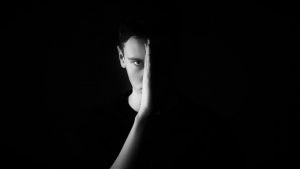
As a result, you remain stuck in a situation you don’t want to be in or keep experiencing “bad luck” because you have not learned your lessons and evolved.
For instance, it might be difficult for you to end a relationship because your hero is governed by lust. This is because you are possessed by The Lover archetype that leads you into temptation for the wrong reasons. If you keep going back to a lover you know is not right for you, you need to summon the strength to bring the relationship to a final end.
Lust can appear in many forms and is a product of not getting what you want or wish for. This emotion is often repressed at a very early age and is deep-rooted in everyone. It takes the courage of a warrior to break away from these chains of delusion.
Thought-Provoking Quote
“There is a lust for revenge, which is called rage; a lust for having money, which is called avarice; a lust for victory at all costs, which is called stubbornness; a lust for self-glorification, which is called boastfulness. There are many and varied kinds of lust, some of which are specifically named, others not. For who could easily give a name to the lust for domination, which, as we know from the civil wars, is nevertheless very powerful in the minds of tyrants?”
~ St. Augustine
The Hero, although having outgrown the child, is still among the immature archetypes. The weakness is in failing to control your desires with rational thinking. Subsequently, you have a tendency to rush into something without a strategy or forward planning.
That said, the Hero is central to personal development and the enjoyment of life. When this side of your character is developed you can go on to achieve the greatest good. But when underdeveloped, you will remain unhappy and unfulfilled.
An inability to be honest and open with people is also a shadow aspect of the Hero. You may avoid expressing how you truly think and feel because you are afraid of what other people might think of you.
There may also be times when you feel vulnerable or dependent on others to make your decisions for you rather than voicing what you really want. A weak hero will typically avoid taking an opportunity because it’s easier to stay in your comfort zone.
Other times you will act spontaneously without a plan. Here we see the naivety of the child who has not yet developed Hero consciousness. Whereas spontaneity is a good way of developing the 12 major archetypes, other times it will leave you unprepared and floundering – so choose your moments wisely.
This is the result of a lack of trust in yourself because you were reprimanded for “being stupid” when you were a child. If you did something which “could have got you killed (or hurt)”, the Hero in you is repressed.
The same problem may occur if you were never praised for your achievements. A disruption to your confidence-building process in childhood will prompt you to push beyond your limits in adulthood.
Subsequently, the shadow warrior causes you to be wild and reckless as an adult. Here the hero is trying to break into your conscious thinking but has to push you to the extremes – and perhaps beyond your capabilities.
In this scenario, the Self overrides the part of your ego that serves to protect your survival. Because the unconscious drives life, when it is suppressed, it will turn against you.
Thought-Provoking Quote
“The unconscious is not a demoniacal monster, but a natural entity which, as far as moral sense, aesthetic taste, and intellectual judgement go, is completely neutral. It only becomes dangerous when our conscious attitude to it is hopelessly wrong. To the degree that we repress it, its danger increases. But the moment the patient begins to assimilate contents that were previously unconscious, its danger diminishes. The dissociation of personality, the anxious division of the day-time and the night-time sides of the psyche, cease with progressive assimilation.”
~ Carl Jung, The Essential Jung: Selected Writings
People who look to establish their sense of Self are on the path to expressing their uniqueness. There is a lingering feeling that you have to prove yourself and leave a mark on the world. The Hero can help you achieve your goals but unless the positive aspects of this energy are developed, the warrior archetype is destructive and harmful.
This act of defiance is the explorer or outlaw archetype which are essential aspects of the hero. It can often surface in people in their 40s who decide to leave the corporate world and set up their own business, design an innovative product or develop an innovative form of creative work.
Also known as Rebel, Outlaw, Father, Destroyer, Entrepreneur
The Philanthropist archetype is a well-developed version of the Caretaker and emerges in outspoken individuals that recognise when a need for change is required; either in the physical world or within yourself.
Whereas the Caretaker can easily become bogged down by emotions, the Philanthropist has more control over their feelings. You are more confident, clear on your intentions and courageous enough to bring ideas and opportunities into the world without feeling the need to be accepted, loved or appreciated.
Because the Philanthropist cares about making the world a better place, you are often in opposition to government figures, irresponsible corporations and anybody else you do not feel is serving the community in constructive ways.
How you care for others can be a reflection of how you are not paying yourself sufficient care and attention. Like the Caretaker, when this archetype is undeveloped, you have an insecurity complex which prompts you to be driven by desire.
Attachments you use to provide comfort can consume your life and you have a tendency to spend more time working than enjoying time with your family.
But the Philanthropist has the vision to see beyond the veil of illusion. If this energy is a dominant force in your psyche, you have a tendency to reconnect with yourself quickly and recognise a change is required.
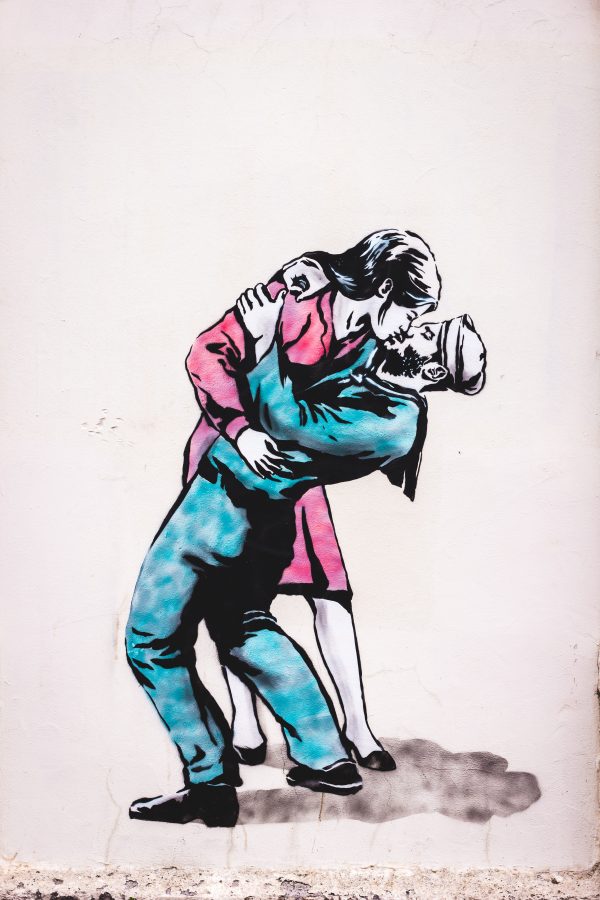
The Philanthropist gives you the capacity to let go of habits, routines or attachments that no longer serve a constructive purpose. You can make bold decisions if you believe it is the best thing to do for the greater good. This inner strength enables you to develop as a person, evolve spiritually, improve your career and build loving and meaningful relationships.
When the Philanthropist is wounded, this energy shows up as agitation, impatience, arrogance, doubt, dissatisfaction and stubbornness. You can become argumentative, dictatorial, irrational and selfish.
This energy typically emerges as an ideal but to realise what you believe is best, you have to take constructive action. This may be something you have to do for yourself or with the help of others. But the wounded Philanthropist struggles to find the courage or the communication skills to enact change.
If, on the other hand, you are endowed with courage from the Hero or the Warrior, you may try and bring about the change but go about it the wrong way. Irrational behaviour creeps in and you find yourself becoming less intolerant, bad-tempered, overstretched, frustrated and impractical.
The underlying motivation for the undeveloped Philanthropist is a desperate need for recognition and a single-mindedness that you have to get what you want. If you notice these negative traits are ruining your relationships and hindering your progress, you need to take a step back and have a word with yourself.
To successfully integrate the Philanthropist archetype, you must be prepared to make changes logically and go with the flow to adapt to new ways of being.
Also known as Wizard, Sorcerer, Wise Judge (wise old man), Oracle, Muse, Pope, Magician
The Sage archetype serves as the bridge to creating the life you envision for yourself. This energy emerges as self-awareness and intuitive thoughts that are accompanied by a feeling of certainty — an inner knowing if you will.
Whereas intuition in the Divine Child and Explorer archetypes can sometimes be naive and undeveloped, the force is matured and much stronger in the Sage. This is your inner wisdom. To fully develop the Sage, you must learn to trust this inner wisdom is the Truth (the whole truth and nothing but the truth).
In mythology, the Sage archetype shares a close relationship with the King. This character is often the Ruler’s adviser as it can help guide your decision-making.
The Sage personality tends to be intellectual, knowledgeable and wise. Essentially, the energy of the Sage is a transformative power which is why we say ‘Knowledge is Power’.
The Sage archetype can be likened to the magician in the second card of the tarot. The figure of the Magician is seen with the four elements he will work with on the table in front of him. This imagery reflects the inner Sage in you understands how to focus your energies, work with the forces of nature and use whatever resources you have to hand.
The four elements also represent psychological abilities; passion (fire), logic (air), creativity (water) and application (Earth).
With the capacity to work with your innate forces of nature, the magician in you can transform consciousness and enable you to perceive the world in a different way.
By tapping into the infinite resource of the unconscious, the wisdom of the Sage appears – the next development of consciousness once you have mastered control of your inner magician.
It is wisdom that enables you to detach from the world, to step back and observe in order to gain a perspective.
People with a well-defined magician archetype are often introverted and considered the quiet, silent types. Detachment can be seen as cold and unfriendly, but can also be recognised as a sign of inner strength.
Subsequently, you will find that people who do not understand this aspect of human nature do not trust you and will keep their distance. They may see you as a loner or a weirdo.
On the contrary, healthy Sage types enjoy being in the presence of other people who engage them in one form or another, intellectually and emotionally. However, there comes a point where you have to retreat to your own space to recuperate.
The shadow nature of the Sage typically appears as three types of subtle energies; hyper-critical, emotional detachment and a refusal to see the Truth.
Although Sage’s energy enables you to see more alternatives, you may not always be satisfied with the options you have and often feel there is a better option. This search for the perfect solution leaves you feeling unsatisfied with what you’ve got.
Watch the video on Perfectionism for more information.
Here we see a close relationship with the shadow King (i.e. Midas) who always wants more. This is a common problem in young people who have too many options. You may even have strong sensations of mental paralysis that cloud your decision-making.
Detachment has both positive and negative connotations. Whereas you may not be interested in material possessions, you can take this too far and deny yourself the smaller pleasures in life that are enjoyed by the Lover archetype.
Because you have little time for small talk and have a short-thrift with people who do not meet your intellectual standards, you tend to shy away from social events and may even label yourself as an introvert.
You may be an introvert, but if you retreat too far into solitude, you may cut people out of your life — including family members. Doing so can starve you of emotional nutrition.
When the Sage energy is unbalanced, you may also have a tendency to analyse your emotions intellectually rather than experiencing the feeling. You live in your head which cuts you off from your body.
Another shadow energy that poses the Sage problems in relationships is the tendency to be overly critical. You have an ideal of how you think the world should be and expect other people to adhere to your standards. This can make you appear irrational and arrogant.
Also known as Maiden, Addict, Hedonist, Damsel, Prostitute, Courtesan
Moore and Gillett feel that of all the 12 major archetypes, the Lovers energy is missing the most in modern men. As a result, men are disconnected from their emotions and the world around them.
The Lover archetype encourages you to love yourself so that you are capable of loving others. But it is also this binding energy that invites you to indulge and delight in the things you love in life.
When Lover energy is developed, you feel comfortable in your skin, you can laugh at yourself, you feel life and have a deep sense of love, gratitude and appreciation.
Whereas the wounded Hero finds it difficult to be open, the Lover understands that honesty is the root of commitment and affection. This energy enables you to find happiness in being part of somebody else’s life and is ultimately a healing influence for the wounded Hero.
But the Lover archetype is not merely about sex and the ability to form long-lasting relationships; it involves an inner knowing of what you like and what you don’t. A positive Lover archetype has control of “libido” – the vital creative energies that influence your behaviours and make you a magnet for the things you deserve.
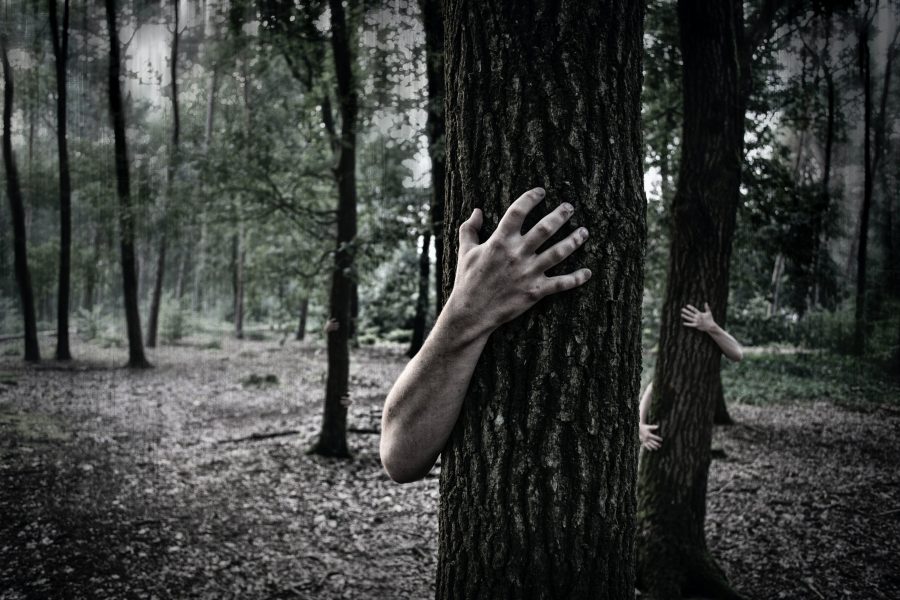
The energy of the Lover archetype appears in flashes of inspiration that spark creativity. It is the primordial energies of Jung’s Maiden archetype that propels you from the cocoon of your parents and enables you to start experiencing life independently.
In doing so you start to understand what life is all about – which is why it is important to integrate the Lover by reading social cues and being empathetic towards others. By understanding the nature of others, you learn about your own nature and vice versa.
When the Lover is awakened, you develop a passion and an appetite to pursue personal interests. The Lover is, therefore, a perfect foil for the Hero archetype. We see this in Aphrodite’s infatuation with Ares in Greek mythology.
The Lover archetype also fuels inspiration in the Everyman archetype which is needed to develop a dedication to yourself rather than attaching yourself to the interests of other people just to fit in. In men, Lover energy helps you develop key feminine qualities of care, nurturance, bonding and self-love.
In women, it enables you to escape the devouring mother, become independent and pursue your goals. In essence, the Lover provokes aspirations and gives your life meaning.
According to Moore and Gilette, the Lover is usually the most repressed archetype in Western men. This is due to a patriarchal mentality in which men are not encouraged to express their emotions. As a result, male adults are “not in touch with their feelings.”
The Lover is also repressed in children who are brought up in an environment that sets narrow boundaries. Parents who are devoutly religious or have rigid views of how to behave and how not to behave ultimately destroy the lover archetype in their child.
Destroying the Lover archetype ultimately hinders the ability of a person to love themselves and form attachments in the external world that are healthy and constructive. This has a devastating impact on the life of an adult.
A lack of self-love ultimately erupts in destructive behaviours. On the one hand, a repressed Lover becomes promiscuous and addicted to drugs, food or some other obsessive passion that feeds your emotions.
On the other hand, you can become impotent and have difficulty forming relationships or finding anything you can relate to. To overcome the Shadow, you have to invoke the energies of the Explorer and embark on a voyage of self-discovery otherwise you risk becoming lost, confused and depressed.

Not only can loving someone too much lead to infatuation and suffocate your partner, but the intense feelings will inevitably lead to rabid jealousy, disappointment and petty arguments. It will also make you turn a blind eye when your partner is ill-treating you or humiliating you.
Someone who is completely out of sync with the Lover archetype feels flat and empty. They have no passion for anything and struggle to form meaningful relationships.
A lack of self-worth can also make you eternally restless. The hapless romantic is always searching for the right person, or an experience, that makes you feel alive. The shadow Lover appears as needy, dissatisfied and depressed.
On the other hand, you could become so obsessed with a project, hobby or vice that it eventually drives you to ruin rather than bringing you joy. Obsessions can cause problems with your relationships and your finances.
Without the Lover, you feel vulnerable and over-reliant on someone or something; alcohol, coffee, marijuana, cocaine etc. Like obsession, dependency is a road to ruin.
A common cause of the shadow Lover is a false belief that you cannot love or be loved. The neurosis stems from a lack of emotional support or love when you were a child.
You may also have abandonment issues which have not been resolved. A feeling of abandonment in infants cannot be avoided. Studies have found that babies feel abandoned the first time the mother leaves them alone. If parents do not respond to the cries (demands) of a baby in good time, the infant will feel abandoned. However, you don’t want your child growing up as a spoiled brat either.
These early issues of abandonment can, of course, be rectified as a child matures. With love, affection and care, a child will grow into a self-confident adult who should have the capacity to forge relationships with strong bonds. When the Lover archetype is allowed to flourish, people feel connected to everything and everyone.
Other Trickster Archetypes: Joker, Fool, Joker, Entertainer, Magician,
The Trickster is the playful side of your character that seeks to bring joy and laughter. This archetype is the side of your nature that softens the intensity of the Ruler’s energy and helps you to relax into family or social life. It is also the Trickster’s positive energy that can make a strict Ruler a warm and amiable leader.
As with the other 12 major archetypes, however, the Trickster has a bipolar attitude which does not recognise anything of value. The shadow Trickster will try to fool other people with lies and manipulation. But essentially you are only fooling yourself.
However, a positive aspect of this seemingly manipulative nature of the Trickster is that it can deflate your ego. A role of the Trickster is to help you recognise the error of your ways and bring you to self-awareness. However, it can do this by making you feel like a fool.
Thought-Provoking Quote
“When the trickster is evident in the psyche, there is a “personification of traits of character which are sometimes worse and sometimes better than those the ego-personality possesses..the trickster motif does not crop up only in its mythical form but appears just as naively and authentically in the unsuspecting modern man – whenever, in fact, he feels himself at the mercy of annoying “accidents” which thwart his will and his actions with apparently malicious intent. He then speaks of “hoodoos” and “jinxes” or of the “mischievousness of the object”…on a civilised level, it is regarded as a personal “gaffe”, “slip” “faux pas” etc, which are then chalked up as defects of the conscious personality.” The “main part of him [the trickster] gets personalised and is made an object of personal responsibility.”
~ Carl Jung, The Archetypes and the Collective Unconscious
From a positive perspective, the Trickster teaches you not to take life too seriously, to make jokes and not to be too hard on yourself or others. Together, the Jester and the King are the quintessence of work-life balance. In medieval Royal Courts, it was the role of the Jester to distract the King from his world responsibilities and concerns and to keep his feet on the ground to prevent him from becoming egotistical.
The Trickster places pleasure and happiness above all else. It is a crucial aspect of consciousness which helps you to dissolve the stress associated with modern lifestyles. This archetype can also serve as a bridge and re-connect you with the “Divine Child” which is spontaneous and creatively playful.
When the playful side of your nature is ignored and suppressed because your personality is dominated by an egotistical Ruler, the Trickster will appear to make a fool of you.
Jung classified the Trickster as a rudimentary stage of psychological development – the “psyche that has hardly left the animal level.” It shows up as “instinctual, uninhibited, and often childish.”
It is the prankster in the classroom, the joker in the group, the inhibited leader of the pack, and the fool who acts without any thought of the consequences.
But whilst the trickster archetype is capable of buffoonery and crude behaviour, he can also fuel the creative function to bring forth innovative ideas and serve as a teacher who helps to bring unconscious content to the conscious mind.
Thought-Provoking Quote
“The trickster as a “primitive “cosmic” being of divine-animal nature, on the one hand superior to man because of his superhuman qualities, and on the other hand inferior to him because of his unreason and unconsciousness.”
~ Carl Jung, The Archetypes and the Collective Unconscious
When the Trickster is evident in the psyche, the individual will have personality traits that are sometimes better and sometimes worse than the ego possesses.
For example, whereas the shadow nature of this archetype provokes the personal consciousness to acknowledge your character flaws, the Trickster will make you believe anything is possible even when it isn’t.
Although Jung classified the Trickster as “a summation of all the inferior traits of character in individuals” [CW9i], it is the aspect of consciousness that attempts to instil a belief that your goals are possible. In one sense, this energy tricks the ego to help you realise the error of your ways, but the trick may also be to encourage you to pursue opportunities by revealing to you that you have the acumen to achieve your goals despite self-doubt.
We see this clearly in mythology. Prometheus steals the fire from the gods to give to humans. Fire is a motif representing passion and thoughts and the gods are your higher conscious nature – the archetypes that possess the qualities you need to succeed.
In another myth, Hermes, recognised as the ultimate trickster in Greek mythology, steals Apollo’s (conscious mind) cattle on the day he is born (new idea) and hides them from the sun god (replaces concrete beliefs with a different attitude or belief).
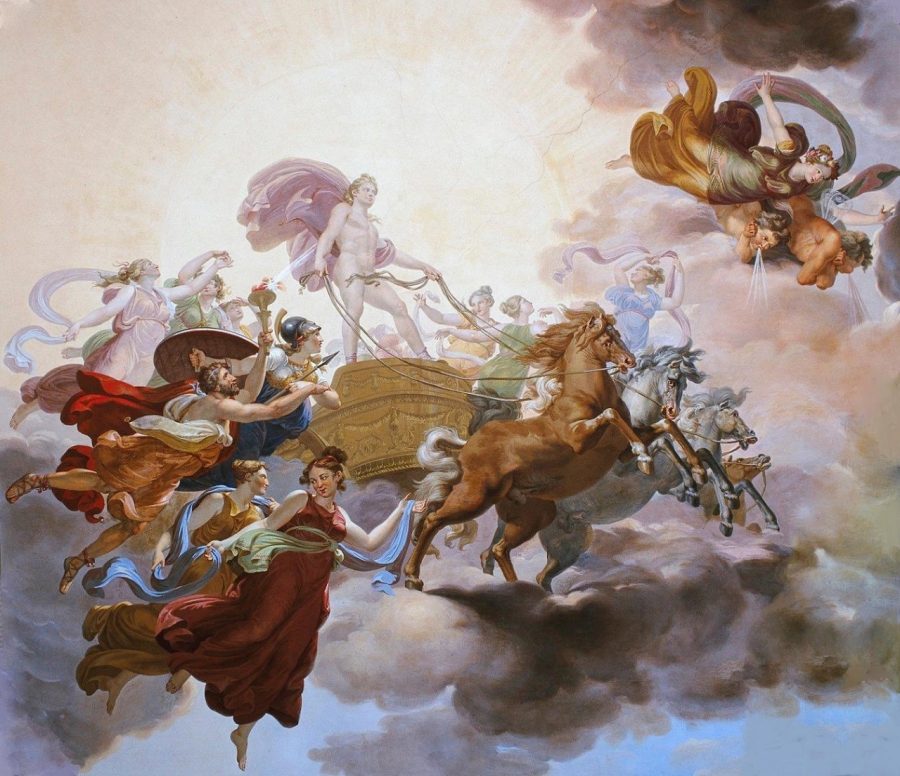
People who can laugh at themselves and make others laugh have integrated the positive nature of the trickster archetype into their personalities. So too have free-spirited innovators who can think outside the box and “transform the meaningless into the meaningful.”
However, because the Trickster cannot always be trusted, you have to be on your guard to apply logic and distinguish mad-hatter ideas from the realm of fantasy. The Trickster will fill your mind with false perceptions.
The Trickster’s shadow manifests in negative ways. When the playful side of your nature that seeks enjoyment is repressed, the shadow strikes a compromise – usually into self-destructive behaviours.
This immature energy will go in search of comfort to fulfil the survival needs of your animal nature that is unaware of its divinity.
Thus the Trickster’s capacity to ‘deceive’ the conscious mind may draw you towards emotional eating, drugs, alcohol, sex or any other obsessive addiction because you think you need it to get through the moment.
If you observe what happens and how you feel when the shadow trickster is at play, you can release trapped emotions that are buried deep in your subconscious.
A person who has a dominant Trickster archetype will have mental flights of fancy but can often be made to appear like a fool. You will also find yourself caught in two minds, confused by the crossroads you encounter, making jokes in inappropriate moments and feeling sexually rampant.
These are symptoms of an immature mind that has not outgrown the childish behaviour which makes the Trickster archetype such an adorable character. When permitted to project too often, the Trickster can become annoying.
As a teacher, the Trickster can warn against the dangers of arrogance or excessive pride. This energy will bring people who brag or exaggerate achievements back down to earth with a bang.
Like the Sage, the wounded Trickster also has a tendency to live in their heads, but in this case, it is your imagination that consumes you rather than intellectual pursuits.
Whilst a creative imagination can produce positive results, individuals with a wounded Trickster who have not activated the constructive nature of the Hero, have a tendency to imagine how their life could be rather than actually taking positive steps to manifest desire into reality.
Regardless of whether the Trickster appears as the inspirational creative force or the self-sabotaging destructive force, this archetype is a catalyst to establish order out of chaos.
Other Warrior Archetypes: Destroyer, Dragon-slayer, Knight, Soldier, Outlaw
The Warrior archetype has a positive mental attitude that imbues you with self-confidence, composure and courage. You know what you want, you know how to get it and you don’t hold back from facing whatever challenges you have to face to meet your objectives.
When the Warrior is in its fullness, you are self-assured and have an inner calm that enables you to control your emotions. You’re not afraid to make mistakes, and when you do, you recover from setbacks quickly. The defining characteristics of the Warrior archetype are personal integrity, practical logic and the determination to succeed.
When the Warrior’s energy is underdeveloped, you’re afraid to make mistakes and don’t admit any wrongdoing. You also refuse to acknowledge your shortcomings and blame your failure on someone or something else.
The wounded Warrior is more likely to stubbornly drive toward a desire fuelled by greed, arrogance or misdirected pride (to prove a point) than accept you do not have the capabilities. But doing so sets you up for defeat whereby you become defensive and aggressive.
If you allow your ego to remain undeveloped and overinflated, you risk being absorbed by anxiety and depression because you no longer trust your ability to cope with your environment.
The Warrior is a mature version of the Hero. The key differences are that the Warrior knows your limitations and has a strategy in place before taking action. The Hero rushes into battle with a false sense of pride and blind hope.
We see this aspect of the Hero-Warrior dichotomy in the characters of Athena and Ares in Greek mythology. Athena, goddess of wisdom and crafts serves as a protective and guiding influence that is loved by her father Zeus, whereas Ares loses his battles because he is overcome by pride and passion.

A developed Warrior is noticeable in the time you are able to overcome a setback. When you experience a disappointment, the developed Warrior reacts sooner than you ordinarily would if this energy is underdeveloped or dormant.
The capacity to pick yourself up dust yourself down and go again is a sign of courage and a willingness to learn from mistakes. This energy imbues the fearlessness you may need to achieve lofty goals.
In the Master Mind Content Essential Self-Development Program, Athena is associated with both the Warrior and the Sage.
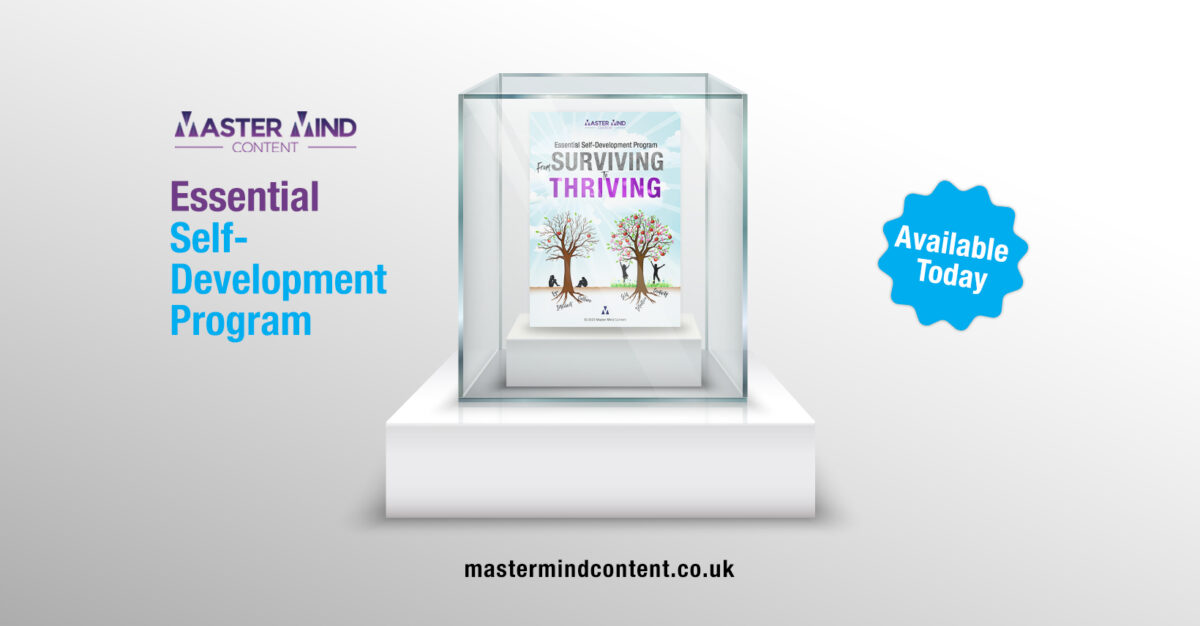
Athena. Of course, is known as the goddess of wisdom. The etymology of philosophy comes from the Greek root – philo (love) and sophia (wisdom). In essence, the Sage embodies the ‘love of wisdom’ and the Warrior gives you the confidence and the courage to follow your ideas through with positive actions.
A yardstick to measure whether your Warrior energy is a dominant force is how aggressive you are. The Shadow nature of the Warrior is overly aggressive even when you’re trying to be assertive.
Aggressive energy surfaces in ugly ways; violence, anger, frustration, abusiveness, jealousy, revenge, impatience, recklessness and irrational behaviour.
A lack of emotional security can also lead to indiscretions that involve some form of risk-taking; i.e. cheating on your spouse, extreme sports, gambling higher bets than you can afford.
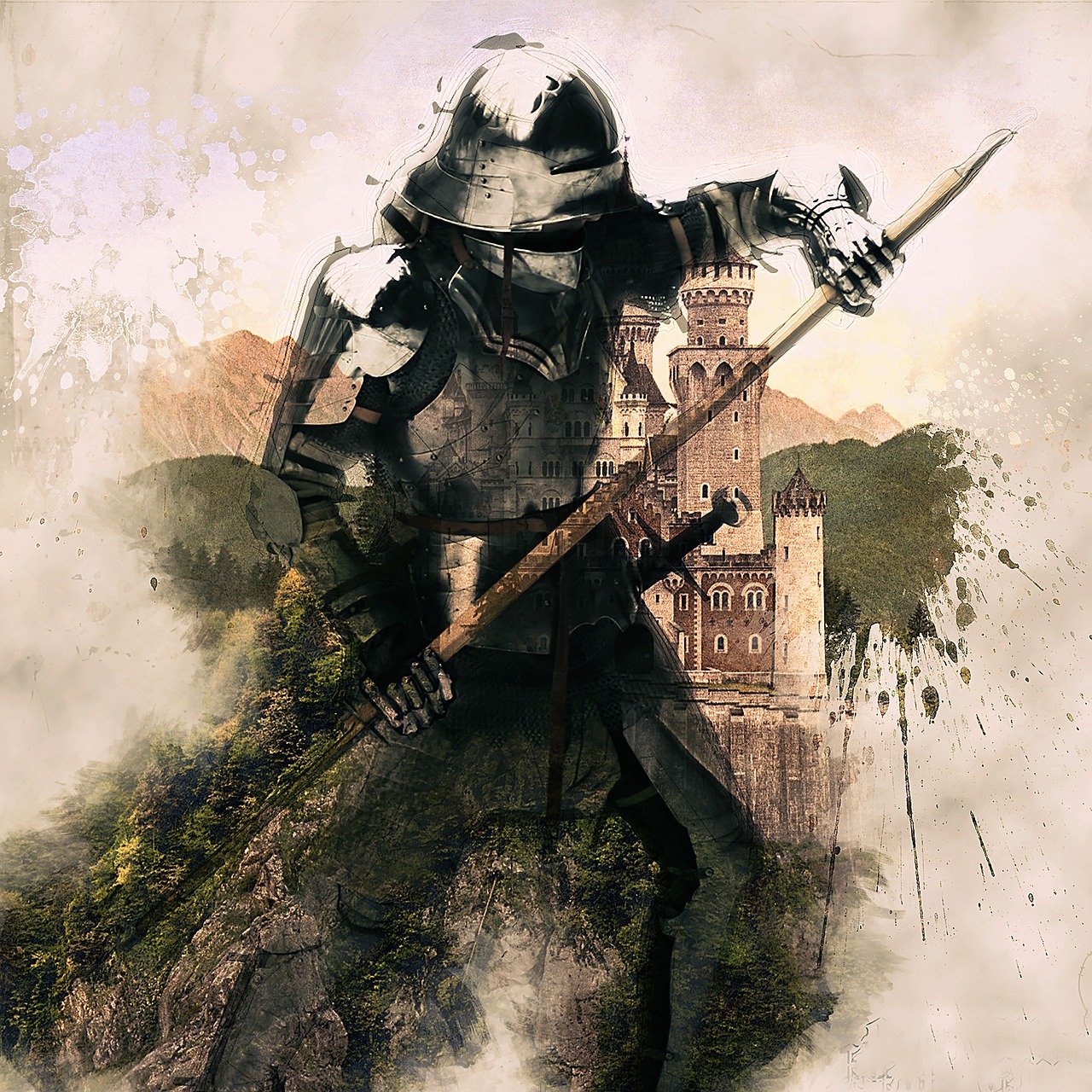
To develop the Warrior in you, it is important to recognise your inner knowledge but also to avoid unnecessary conflicts and arguments.
Because the Warrior’s insecurity surfaces as aggressiveness/defensiveness, a dislike of being told what to do and distrust of people in a position of authority, you do not want to be influenced by others. This is due to an underlying fear that you will have to relinquish your power which, at times, means losing control of your personal power.
Subconsciously, you don’t trust yourself to do the right thing in some areas of your life and ultimately project this onto other people.
This can cause you to lose sight of personal growth to the point where you become competitive and selfish. In this frame of mind, you risk developing a “Me versus the World” attitude rather than recognising the interconnectedness of the world as the Philanthropist does.
Everything becomes a duality for the wounded Warrior; winning and losing, profit and loss, all or nothing. And the unhealthy Warrior does not like to lose and walk away with nothing. Subsequently, you are always fighting, always struggling and always keeping up your guard.
As you can see, it’s important to understand the nature of each of the 12 major archetypes and determine which qualities you need to develop. The archetypes can also be used to identify complexes, and neurotic behaviours and determine the root cause of emotional wounds.
Understanding the 12 major archetypes gives you a powerful tool that enables you to recognise how you are causing problems in your life. But more importantly, they help you to determine tailored solutions that work for you.
The Master Mind Content Essential Self-Development Program takes you into a deep understanding of the 12 major archetypes. But to make it easier to learn and remember all the qualities and frailties of human nature, each of the archetypes has been assigned a male and female god from the Greek pantheon.
The gods and goddesses represent masculine and feminine energies that need balancing, and the stories and images in a rich body of mythology increase memory recall and help you to identify which archetype is influencing your life faster than any other archetypal model.
You will also learn how depth psychologists determine the root causes of common complexes, how the human psycho-biological system works, philosophies that enable you to adopt new ways of being, tools that help bring self-awareness to the light of the conscious mind and how you can use esoteric symbolism as a self-development tool.
In addition, to a 230+ page handbook describing the 12 major archetypes in detail, you also have access to additional content stored in the VIP Members Area and in one-to-one consultations with our guides. We consistently upload new content into the VIP Members Area so you will always have access to valuable information at no extra cost for as long as Master Mind Content remains a business.
So, we would appreciate your support.

